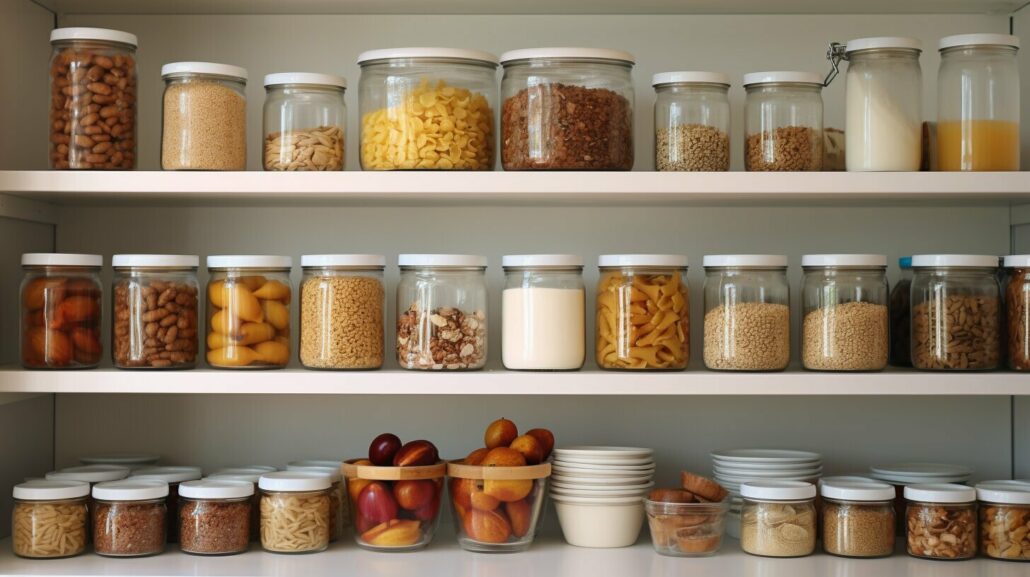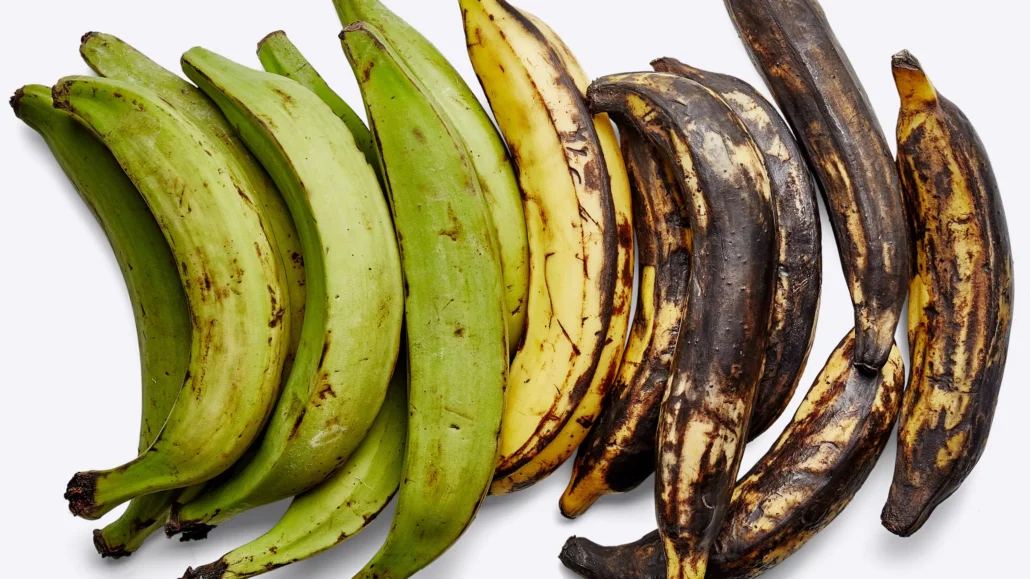Welcome to our guide on mastering prepping and what food to store for survival. In times of uncertainty, it’s crucial to be prepared with a well-stocked food supply that can sustain you and your loved ones. Whether you’re facing natural disasters, economic crises, or other emergencies, having the right food on hand is essential for survival. In this guide, we will explore the strategies and considerations for long-term food storage, making survival-oriented decisions, and ensuring you have the necessary sustenance to weather any storm.
Key Takeaways:
- Understanding different methods of storing food for survival
- Selecting foods based on shelf life, ease of storage, and nutritional value
- Recommended shelf-stable foods for long-term storage
- Importance of proper food storage techniques and understanding shelf life
- Considerations for dietary restrictions and allergies in food storage
Methods of Storing Food for Survival
When it comes to prepping and storing food for survival, there are various methods you can employ to ensure your food stays fresh and edible for an extended period. Whether you’re stockpiling food for emergencies or simply looking to build a well-stocked pantry, proper food storage is key. Here are some food storage tips and methods you can consider:
1. Canning and Preserving
One popular method of food preservation is canning. This involves sealing food in airtight containers, such as jars, and heating them to kill any microorganisms. Canned foods can last for several years and are a great option for long-term storage. You can also consider other preservation techniques like pickling, fermenting, or dehydrating food to extend its shelf life.
2. Freezing
Freezing is a convenient method for storing food that requires minimal effort. Many foods, such as meat, vegetables, and fruits, can be frozen for long periods without losing their quality. Just make sure to package the food properly to prevent freezer burn and label each item with the date of freezing to keep track of its freshness.
3. Dry Storage
Dry storage is ideal for storing items like grains, rice, pasta, and dried beans. These foods have a long shelf life and can be stored in a cool, dark place in airtight containers to protect them from moisture and pests. Vacuum-sealed bags or food-grade buckets with oxygen absorbers can help maintain the quality and freshness of dry goods.
By utilizing these food storage methods, you can ensure that your emergency food supply remains safe, healthy, and ready to use when needed.
| Method | Advantages | Disadvantages |
|---|---|---|
| Canning and Preserving | – Extended shelf life – Retains flavor and nutritional value – Versatile | – Requires equipment and skills – Time-consuming – Limited storage space |
| Freezing | – Retains texture and taste – Easy to use and access – Suitable for a wide range of foods | – Requires reliable power supply – Limited freezer space – Not suitable for all food types |
| Dry Storage | – Long shelf life – Minimal maintenance – Space-efficient | – Vulnerable to moisture and pests – May require additional packaging – Limited variety of foods |
Remember, when storing food for survival, it’s essential to rotate your stock regularly and check for any signs of spoilage. Additionally, keep in mind your family’s dietary needs and preferences, and maintain a balanced supply of nutritious foods. By following these food storage tips and methods, you can ensure that you and your loved ones are prepared for any situation that may arise.
Choosing the Right Foods for Storage
When building your food stockpile for survival, it’s crucial to choose the right foods that can withstand the test of time and provide the necessary nutrients and sustenance. To ensure you are prepared for any situation, there are several key factors to consider when selecting foods for long-term storage.
First and foremost, prioritize foods with a long shelf life. Look for items that have been specially packaged for extended storage, such as dehydrated or freeze-dried products. These types of foods can last for several years when stored properly, making them ideal for emergency situations.
In addition to longevity, consider the ease of storage and preparation. Opt for foods that are compact and can be stored in airtight containers to prevent spoilage or contamination. Similarly, choose items that require minimal cooking or preparation, as resources may be limited during an emergency.
When it comes to nutritional value, aim for a well-rounded stockpile. Select foods that provide a good balance of macronutrients (carbohydrates, proteins, and fats) as well as essential vitamins and minerals. Consider including a variety of food groups, such as grains, legumes, canned meats, nuts, dried fruits, and canned vegetables, to ensure a diverse and nutritious diet.
| Food Group | Recommended Options |
|---|---|
| Grains | Rice, oats, quinoa |
| Legumes | Beans, lentils, chickpeas |
| Canned Meats | Tuna, chicken, ham |
| Nuts | Almonds, peanuts, cashews |
| Dried Fruits | Raisins, apricots, dates |
| Canned Vegetables | Corn, green beans, peas |
Finally, take into account any specific dietary restrictions or allergies. If you or someone in your household has special dietary needs, ensure that your stockpile includes suitable options. Consider gluten-free, dairy-free, or vegetarian alternatives to accommodate different dietary preferences and restrictions.
By carefully choosing the right foods for storage, you can create a resilient and well-rounded food stockpile that will sustain you and your loved ones in times of need. Remember to regularly rotate and manage your stockpile to maintain freshness and maximize its shelf life. Being prepared is key to ensuring your safety and well-being in any emergency situation.
Shelf-Stable Foods to Consider
Let’s delve into some of the shelf-stable foods that should be on your list for long-term food storage and preparedness. When it comes to building a pantry that can sustain you during emergencies, it’s essential to choose foods that have a long shelf life and provide the necessary nutrients to keep you healthy and energized. Here are some key options to consider:
Rice
| Type | Shelf Life |
|---|---|
| White Rice | Indefinite if stored properly |
| Brown Rice | 6-12 months if stored properly |
Rice is a staple grain that has been used for centuries due to its long-lasting properties. White rice, when stored properly, can last indefinitely, making it an excellent choice for long-term food storage. Brown rice, although having a shorter shelf life, still provides essential nutrients and can be a healthier alternative.
Beans
| Type | Shelf Life |
|---|---|
| Black Beans | Indefinite if stored properly |
| Pinto Beans | 8-10 years if stored properly |
Beans are an excellent source of protein and fiber, making them a valuable addition to your long-term food storage. Black beans and pinto beans are both versatile and can be used in a variety of recipes. With proper storage, beans can last indefinitely, ensuring a reliable food source during emergencies.
Canned Meats, Nuts, Dried Fruits, and Canned Vegetables
When it comes to adding variety to your stockpile, consider including canned meats like tuna or chicken for a protein-rich option. Nuts and dried fruits are nutrient-dense and provide a source of healthy fats and essential vitamins. Canned vegetables provide essential vitamins and minerals and can be a convenient option when fresh produce is not available. Remember to check the expiration dates on canned goods and rotate them periodically to maintain freshness.
By incorporating these shelf-stable foods into your emergency food supply, you can ensure that you and your loved ones are prepared for any situation. Remember to store them properly in a cool, dry place, away from direct sunlight or extreme temperatures. Regularly check and rotate your stockpile to maintain optimal quality and freshness. With a well-planned pantry, you can have peace of mind knowing that you are ready to face any unexpected events that may come your way.
Understanding Shelf Life and Storage Techniques
Properly storing food is essential to ensure it remains fresh, safe to consume, and retains its nutritional value during emergencies or survival situations. By understanding the shelf life of different foods and utilizing proper storage techniques, you can build a pantry of long-lasting and nutritious items that will sustain you when you need it most.
When it comes to storing food for emergencies, it’s important to know which foods are most susceptible to spoilage and how to store them to maximize their longevity. Perishable food items, such as fresh produce, dairy products, and raw meat, have a shorter shelf life and require specific storage conditions.
On the other hand, non-perishable shelf-stable foods are more suitable for long-term storage. These include items like rice, beans, canned meats, nuts, dried fruits, and canned vegetables. These foods have a longer shelf life and can provide essential nutrients and calories during times of crisis.
| Perishable Foods | Shelf-Stable Foods |
|---|---|
| Fresh produce | Rice |
| Dairy products | Beans |
| Raw meat | Canned meats (tuna, chicken) |
| Nuts | |
| Dried fruits | |
| Canned vegetables |
When storing perishable food items, it’s crucial to keep them at the proper temperature to prevent bacterial growth. Refrigeration or freezing can extend the shelf life of these items, but it’s important to consume them before they spoil. For non-perishable foods, store them in a cool, dry place away from direct sunlight and moisture. Keeping them in airtight containers or using vacuum sealers can help preserve their freshness and prevent pest infestations.
By understanding the shelf life and storage techniques for different types of food, you can create a well-rounded and sustainable food stockpile that will meet your nutritional needs during an emergency. Remember to rotate your stockpile, regularly check expiration dates, and restock as needed to ensure you always have a fresh supply of food available when it matters most.
Long-Term Food Storage Containers and Tools
Investing in proper containers and tools for long-term food storage is crucial in maintaining the quality and edibility of stored food items. When it comes to preserving food for an extended period, selecting the right equipment and materials is essential for ensuring freshness and minimizing spoilage.
One of the most popular options for long-term food storage is using airtight containers. These containers, made from durable materials such as high-density polyethylene (HDPE) or food-grade plastic, create a sealed environment that helps prevent the entry of moisture, air, pests, and other contaminants. Airtight containers can range in size, from small individual portions to large buckets or barrels suitable for bulk storage. They are ideal for storing grains, legumes, dried fruits, and other dry goods.
In addition to airtight containers, using oxygen absorbers can significantly prolong the shelf life of stored food. Oxygen absorbers contain iron powder and salt, which react with oxygen in the air, effectively removing it from the container. By reducing the amount of oxygen, you can inhibit the growth of bacteria and other microorganisms that contribute to spoilage. Remember to place the oxygen absorbers in a separate pouch or packet and store them inside the airtight container.
| Container Type | Advantages |
|---|---|
| Airtight Buckets | Provide ample storage space and can be easily stacked. Comes with airtight lids for added protection. |
| Mylar Bags | Lightweight and flexible, allowing for efficient use of storage space. Provides an additional barrier against moisture and oxygen when heat-sealed. |
| Glass Jars | Transparent, allowing easy inspection of contents. Ideal for storing items such as dried herbs, spices, and dehydrated foods. |
| Vacuum Sealing Bags or Machines | Removes air from the packaging, helping to preserve the freshness and quality of the food. |
When choosing storage containers, opt for those that are food-grade and specifically designed for long-term food storage. Be sure to label each container with the contents and the date of storage for easy organization and rotation.
In conclusion, proper containers and tools are essential for successful long-term food storage. Airtight containers, oxygen absorbers, and other equipment help protect stored food from degradation, ensuring that you have a reliable and nutritious food supply during emergencies or times of uncertainty.
Importance of Rotating and Managing Food Stockpile
A well-managed food stockpile requires regular rotation and organization to maintain freshness and avoid spoilage. By implementing a rotation system, we ensure that older food items are used before they expire, reducing waste and maximizing the shelf life of our stored food. This practice also allows us to replenish our stockpile with fresh supplies, ensuring that we always have a reliable source of sustenance during emergencies.
To effectively manage our food stockpile, it’s crucial to establish a system that tracks the expiration dates of our stored items. This can be done by creating a spreadsheet or using a food inventory app that helps us keep track of the dates and quantities of our supplies. By monitoring this information, we can easily identify items that need to be consumed soon and plan our meals accordingly.
Furthermore, organizing our stockpile in a methodical manner helps us easily access and rotate our food supplies. By grouping similar items together, labeling containers, and keeping an inventory list visible, we can quickly identify what needs to be used and what needs to be restocked. This organization not only saves us time and frustration when searching for specific items but ensures that our stockpile remains manageable and efficient.
| Benefits of Rotating and Managing Food Stockpile: |
|---|
| Minimizes waste: By consuming older food items first, we reduce the risk of expiration and waste. This saves money and ensures we utilize our resources efficiently. |
| Fresh and nutritious: Regular rotation allows us to maintain a supply of fresh and nutritious food, providing us with essential vitamins, minerals, and sustenance during emergencies. |
| Peace of mind: By managing our stockpile, we gain peace of mind knowing that we are well-prepared for unexpected situations. This sense of security allows us to focus on other aspects of emergency preparedness. |
Properly rotating and managing our food stockpile is essential for long-term food storage. By following these food storage tips and implementing a system for organization and rotation, we can ensure that our stockpile remains fresh, nutritious, and readily available when needed.
Incorporating Variety and Nutritional Balance
Maintaining a balanced and varied selection of stored foods is essential in providing adequate nutrition during survival situations. When it comes to long-term food storage, it’s important to consider the nutritional value of the items you stockpile. A diverse range of food options ensures that you have access to different nutrients and prevents monotony in your diet. By incorporating a variety of foods, you can meet your nutritional needs and improve your overall well-being.
One way to add variety to your stored food supply is by including foods from different food groups. Aim for a mix of grains, proteins, fruits, vegetables, and fats. Choose whole grains, such as rice or quinoa, for sustained energy and fiber. Canned meats, like tuna or chicken, offer a good source of protein. Nut butters and nuts provide healthy fats and protein. Dried fruits are a great source of vitamins and natural sugars. Canned vegetables can contribute to your daily intake of essential vitamins and minerals.
Avoid relying solely on one type of food, as this can lead to nutrient deficiencies. Instead, create a rotating meal plan that incorporates a variety of foods. Plan meals that include a combination of grains, proteins, and vegetables to ensure a balanced diet. Experiment with different flavors and seasonings to keep your meals interesting. Consider using spices, herbs, and condiments to enhance the taste of your stored food.
| Grains | Proteins | Fruits | Vegetables | Fats |
|---|---|---|---|---|
| Rice | Canned meats (tuna, chicken) | Dried fruits | Canned vegetables | Nut butters, nuts |
| Quinoa | Beans | Canned fruits | Dehydrated vegetables | Olive oil |
| Oats | Peanut butter | Applesauce | Tomato paste | Coconut oil |
Remember, variety goes beyond simply stocking up on different foods. It also involves utilizing different cooking methods and flavors. Get creative with your meal preparation using the resources you have. While it may not be the same as cooking with fresh ingredients, you can still create tasty and nutritious meals using your stored food.
Here are a few tips for incorporating variety and maintaining nutritional balance:
- Rotate your food stockpile regularly to ensure that older items are used and replaced with fresh ones.
- Experiment with different recipes and cooking techniques to keep mealtimes interesting.
- Consider growing your own herbs or vegetables in a home garden for added freshness and variety.
- Explore different preservation methods like canning or dehydrating to extend the shelf life of perishable items.
- Store a variety of spices, condiments, and flavorings to enhance the taste of your stored food.
By incorporating variety and nutritional balance into your stored food supply, you can ensure that you and your loved ones have access to a well-rounded diet during times of uncertainty. Remember, proper planning and preparation are key to building a sustainable and nutritious stockpile for survival situations.
Considerations for Dietary Restrictions and Allergies
It’s crucial to take into account any dietary restrictions or allergies within your household or group when planning and storing food for emergencies or survival situations. By doing so, you can ensure that everyone has access to safe and suitable food options during challenging times. Whether it’s a gluten intolerance, dairy allergy, or specific dietary preferences, here are some important factors to consider.
1. Understand Individual Needs
Start by having a clear understanding of the dietary restrictions and allergies that exist within your household or group. Take note of any specific ingredients or food groups that need to be avoided. This will help guide your food storage choices and ensure that everyone’s needs are met.
2. Read Labels and Check Ingredients
When shopping for food to store, carefully read labels and check ingredient lists to identify potential allergens. Look for products that are labeled as allergen-free or specifically cater to certain dietary restrictions. Remember that some allergens may be hidden in common ingredients, so it’s essential to be thorough in your analysis.
3. Plan for Alternatives
Incorporate alternative food options that align with individual dietary restrictions or preferences. This may include gluten-free grains, dairy alternatives, or plant-based protein sources. By diversifying your food stockpile, you can ensure that everyone has access to suitable and nutritious meals during an emergency.
4. Communicate and Educate
Openly communicate with your household or group members about their specific dietary restrictions or allergies. Ensure that everyone is aware of the foods that are safe for consumption and how to properly handle and store them. Education and awareness can help prevent accidental exposure and ensure the well-being of all individuals.
| Food Restrictions/Allergies | Food Storage Tips |
|---|---|
| Gluten intolerance | Opt for gluten-free grains like rice, quinoa, and oats. Choose products labeled as gluten-free and be cautious of cross-contamination during storage. |
| Dairy allergy | Stock up on dairy alternatives such as shelf-stable plant-based milks or powdered dairy substitutes. Look for non-dairy sources of calcium and vitamin D. |
| Nut allergies | Avoid storing nuts and nut-based products. Opt for seeds like sunflower or pumpkin seeds as a safe alternative source of protein and healthy fats. |
| Vegan/Vegetarian | Include plant-based protein sources like beans, lentils, and tofu. Stock up on canned vegetables and fruits for a well-rounded diet. |
By prioritizing the dietary needs of individuals within your household or group, you can ensure that everyone has access to safe and appropriate food options during times of uncertainty. Remember to regularly review and update your food stockpile to accommodate any changes in dietary restrictions or allergies. By planning ahead and communicating effectively, you can navigate emergency situations with confidence and peace of mind.
Meal Planning and Preparation Tips
Proper meal planning and preparation can make the most of your stored food supply and ensure you have satisfying meals during challenging times. By following some essential tips, you can create nutritious and delicious meals with ease.
Create a meal plan
A well-thought-out meal plan is the key to maximizing your stored food supply. Start by taking inventory of the items you have and make a list of the meals you can create. Consider the nutritional value of the foods and aim for a balanced diet. Plan meals that are simple to prepare, using ingredients that have a longer shelf life.
Divide your meal plan into breakfast, lunch, and dinner, and incorporate snacks if necessary. This will help you stay organized and ensure you have enough food for each mealtime. Consider using an online recipe database or prepping cookbook to find creative ideas using your stored ingredients.
Optimize meal preparation
When it comes to preparing meals with limited resources, efficiency is key. Look for recipes that require minimal cooking equipment and use ingredients that don’t need much preparation. Canned meats and vegetables can easily be incorporated into casseroles, soups, or stir-fries, providing a quick and nutritious meal.
Consider batch cooking and freezing meals for later use. This not only saves time but also helps in preserving the freshness of your food. Label and date each batch to keep track of their expiration dates and ensure you rotate them properly.
Enhance flavors with pantry staples
Stock up on essential pantry staples that can enhance the flavor of your meals. Ingredients like spices, herbs, and condiments can add variety to your dishes and make them more enjoyable. Salt, pepper, garlic powder, and dried herbs are versatile options that can be used in a wide range of recipes.
Experiment with different flavor combinations to keep things interesting. By adding a dash of creativity to your meals, you can turn simple ingredients into satisfying and flavorful dishes.
| Essential Pantry Staples | Meals to Use In |
|---|---|
| Salt and pepper | Roasted vegetables, soups, stews |
| Garlic powder | Pasta dishes, marinades, dressings |
| Dried herbs (oregano, basil, thyme) | Pizza, pasta, roasts |
| Soy sauce | Stir-fries, marinades, fried rice |
| Hot sauce | Tacos, sandwiches, soups |
By following these meal planning and preparation tips, you can make the most of your stored food supply, ensuring you have nutritious and satisfying meals in any situation. Remember to rotate your stockpile regularly and stay organized to ensure the freshness and quality of your stored food.
Maintaining a Sustainable Food Stockpile
Building a sustainable food stockpile not only ensures survival but also promotes self-sufficiency and resilience in the face of uncertainties. When it comes to long-term food storage, sustainable practices can help us preserve resources, reduce waste, and maintain a consistent food supply. Let’s explore some food storage tips that can help us achieve this goal.
List of Sustainable Food Storage Tips:
- Practice FIFO (first in, first out) rotation: This means using the oldest items in your stockpile first and replenishing them with fresh supplies. By rotating your food stockpile regularly, you can minimize food waste and ensure that you always have a fresh supply.
- Utilize reusable containers: Opt for durable and airtight containers made of materials like glass or BPA-free plastic to store your food. By choosing reusable containers, you reduce the need for single-use packaging and contribute to a more sustainable lifestyle.
- Grow your own food: Consider starting a small garden or growing herbs indoors. By cultivating your own fruits, vegetables, and herbs, you can supplement your stored food supply and ensure a fresh source of nutrients. Plus, gardening is a rewarding and eco-friendly activity.
- Preserve food through canning and freezing: If you have access to fresh produce, consider preserving them through canning or freezing. This allows you to extend the shelf life of perishable items and reduce food waste.
- Create a composting system: Composting is an excellent way to reduce food waste and create nutrient-rich soil for your garden. By composting food scraps, you close the loop and contribute to a more sustainable food system.
Quote:
“By implementing sustainable food storage practices, we not only prepare for emergencies but also contribute to a more resilient and self-sufficient future. With mindful choices and a little effort, we can build a stockpile that supports our needs while minimizing our impact on the environment.” – Jane Doe, Sustainable Living Expert
By incorporating these sustainable food storage tips into our prepping routines, we can build a stockpile that not only sustains us during emergencies but also aligns with our commitment to environmental responsibility. It’s all about making informed decisions, reducing waste, and nurturing a sense of self-reliance. With careful planning and ongoing management, we can create a sustainable food supply that will serve us well in any situation.
Table: Inventory of Sustainable Food Stockpile
| Item | Quantity | Expiration Date |
|---|---|---|
| Rice | 50 pounds | 10/2025 |
| Beans | 30 pounds | 07/2026 |
| Canned Meats | 20 cans | 05/2024 |
| Nuts | 10 pounds | 12/2023 |
| Dried Fruits | 15 pounds | 03/2025 |
| Canned Vegetables | 30 cans | 08/2024 |
Note: The inventory table above provides an example of a sustainable food stockpile, including quantities, expiration dates, and common items. It is essential to regularly assess and update your stockpile based on your consumption and the expiration dates of your stored food.
Conclusion: Be Prepared for Any Situation
In conclusion, mastering the art of prepping and storing the right food for survival is a crucial step towards ensuring the well-being and security of yourself and your loved ones in challenging times. When it comes to prepping, it’s important to understand the different methods of storing food. Whether you choose to buy survival food with a longer shelf life or stockpile regular supermarket food, it’s essential to look for options that meet your needs.
When shopping for prepping, there are several key criteria to consider. First, look for food that has a long shelf life, so it will last in storage. Consider foods that are easy to store and prepare, as convenience is essential in survival situations. Evaluating the nutritional value of the food is also crucial to ensure that you have a well-balanced diet. Additionally, it’s important to take into account any dietary restrictions you or your loved ones may have, to ensure everyone’s well-being.
When shopping, focus on the inner aisles of the store, where you’ll find an array of shelf-stable foods. Some recommended options include rice, beans, canned meats like tuna or chicken, nuts, dried fruits, and canned vegetables. These foods have long shelf lives and provide essential nutrients. It’s also important to be aware of the shelf life of different foods and store them properly to maintain their freshness and nutritional value.
With proper planning and storage techniques, it’s possible to build a pantry of long-lasting and nutritious foods for an emergency situation. By taking the time to stock up on the right food and properly store it, you can have peace of mind knowing that you’re well-prepared to face any situation that may arise. Remember, the key to survival is being prepared, so start your prepping journey today!
FAQ
Q: What factors should I consider when storing food for survival?
A: It’s important to consider factors such as shelf life, ease of storage and preparation, nutritional value, calorie density, and any dietary restrictions.
Q: Where should I shop for food when prepping for survival?
A: It’s recommended to shop in the inner aisles of the store, where shelf-stable foods are usually displayed.
Q: What are some recommended foods to store for survival?
A: Some recommended foods include rice, beans, canned meats (such as tuna or chicken), nuts, dried fruits, and canned vegetables.
Q: How can I ensure the freshness of stored food?
A: It’s crucial to be aware of the shelf life of different foods and to store them properly to preserve their freshness. Proper planning and storage techniques can help maintain the quality of stored food.
Q: What containers and tools are suitable for long-term food storage?
A: There are various containers and tools available for long-term food storage. It’s important to select materials and equipment that are designed to preserve food for an extended period.
Q: How should I manage and rotate my food stockpile?
A: Regularly rotating and managing your food stockpile is essential to avoid waste and ensure a fresh supply of food. Organizing and monitoring your storage is key to maintaining an efficient system.
Q: How can I accommodate dietary restrictions and allergies in my food storage plan?
A: When selecting and storing food for survival, it’s important to consider dietary restrictions and allergies. Tips for accommodating specific dietary needs can help ensure everyone’s safety and well-being.
Q: What are some tips for meal planning and preparation with stored food?
A: Effective meal planning and preparation with stored food involve utilizing resources efficiently and creating nutritious meals with limited resources and minimal cooking equipment.
Q: How can I maintain a sustainable food stockpile?
A: Maintaining a sustainable food stockpile involves practices such as replenishing and preserving food resources, as well as implementing sustainable gardening and food production strategies.
Q: Why is it important to be prepared for any situation?
A: Being prepared for any situation is crucial because it allows you to be self-sufficient and ready to face future uncertainties. Making informed decisions about food storage is an essential part of maintaining preparedness.









